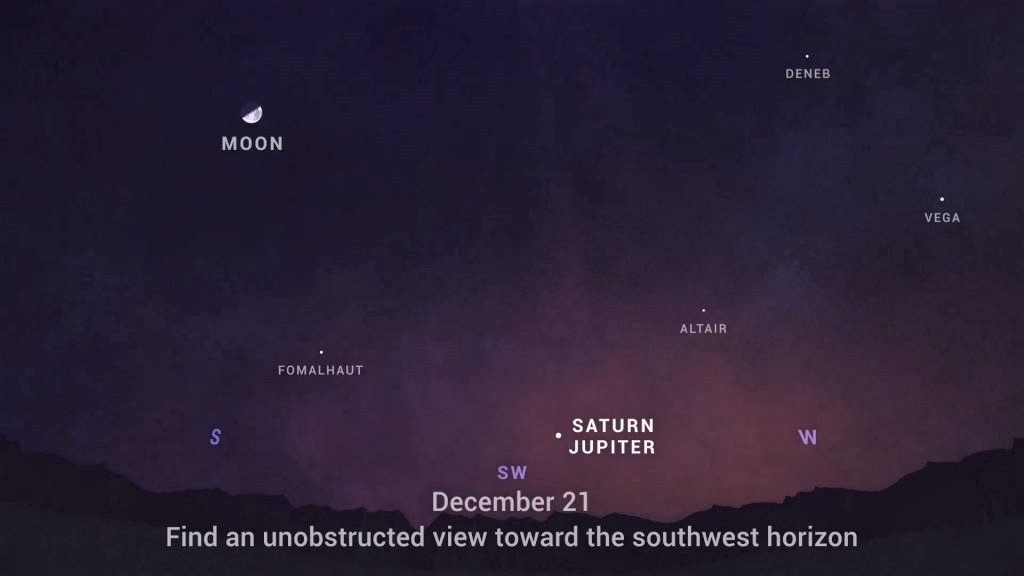
Star gazers should mark their calendars for the winter solstice on December 21 to observe the rare alignment of Saturn and Jupiter in the southwest sky.
Virginia Tech astronomer Nahum Arav says “this rare event is special because of how bright the planets will be and how close they get to each other in the sky.”
Known unofficially as the “Great Conjunction,” the planets of Saturn and Jupiter will line up in a manner that makes for some amazingly bright star gazing. The last time these two were close enough to create the double planet effect was the year of 1226. It also happened again in 1623, but wasn’t visible from earth.
“The two planets can easily be seen with the naked eye,” Arav says. “They will be very close to each other, about a fifth of the moon’s diameter. At their closest, some people will need a binocular to separate them.”
Even so, the planets will still be separated in space by about 450 million miles.
This astronomical event is also called by some the “Christmas Star” because of the biblical account of the Star of Bethlehem, and the timing so close to December 25.
Professor Arav’s ideas for best viewing include:
*Be ready as soon as it is getting dark on December 21, as the two planets are in the southwest and will set early in the evening.
*Locate a place where the southwest horizon is clear.
*An amateur telescope will help reveal the four Galilean moons and perhaps Titan, the largest moon of Saturn, in the same field of view with the planets.
*Plan on peak viewing for up to one hour.
*If overcast skies are anticipated, try to look a day before or a day after. The two planets will be almost as close as on the 21st.
Even though it’s been hundreds of years since the last time these two lined up like this, we won’t have to wait nearly as long for the next conjunction , which is now on the books for March 15, 2080.




